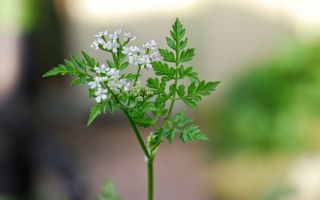Content
- 1 What are the plants and the description of the common chervil and the forest bush
- 2 Chervil chemical composition
- 3 What is useful for common chervil and forest bush
- 4 How to use chervil and cooking methods
- 5 The use of kupyr forest, common chervil in folk medicine
- 6 Application in cosmetology
- 7 The use of openwork chervil, forest gum in cooking
- 8 Contraindications
- 9 Collection and procurement
- 10 Conclusion
- 11 Reviews about chervil
The chervil plant is an annual or perennial from the Umbrella family with valuable culinary and medicinal properties. Before using the herb, you need to familiarize yourself with its description and characteristics.
What are the plants and the description of the common chervil and the forest bush
The common chervil is a herb with a hollow, branched stem up to 50 cm tall. It has thin and thick dissected leaves with a feathery, even or wavy edge. The common chervil looks a bit like parsley and is often used with it in cooking. From the end of May to July, it brings small white flowers, collected in small umbrellas, has an aniseed scent and a pleasant taste. In August and September, it produces brown, smooth fruits.
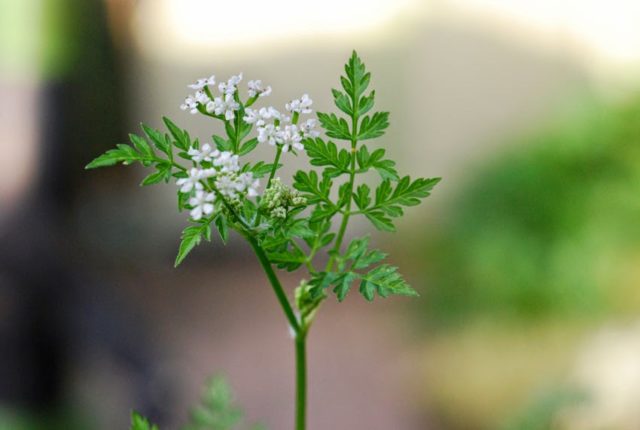
In terms of photos, useful properties and contraindications, the openwork chervil practically does not differ from the perennial forest bush - it is the wild form of the plant. The latter also blooms in June and July with white umbrellas collected in thyroid inflorescences. In early autumn, the forest chervil bears slightly elongated shiny fruits.
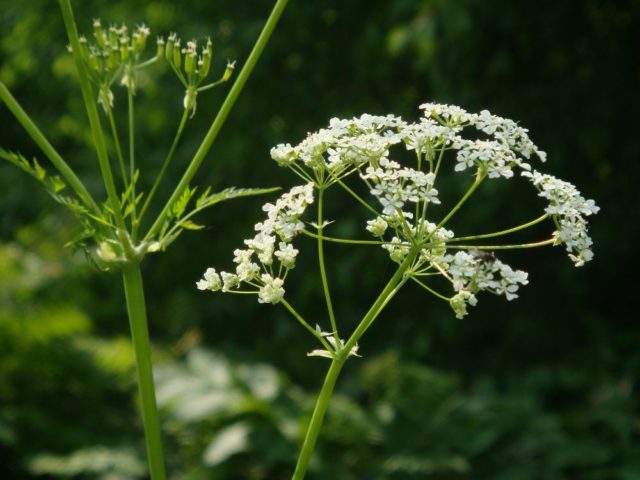
Where does chervil grow
The common chervil, like the forest one, chooses light grassy meadows and sunny meadows for growth, prefers neutral or slightly alkaline soils. Found everywhere in Europe, with the exception of the Mediterranean and Scandinavia. You can see the forest kupyr in Central Asia, in the Caucasus, in Iran. On the territory of Russia, the common chervil grows in the southern regions, mainly in the Krasnodar Territory.
Poisonous chervil or not
Forest Kupyr is a completely safe plant that is not capable of harming health. However, outwardly it is very similar to toxic hemlock, hence the myth that chervil is poisonous.
It is possible to distinguish the forest bush from a dangerous plant by several signs:
- By smell... Common chervil has pleasant aniseed notes, while hemlock has a repulsive "mouse" scent. To get a better smell, you can rub the leaf of the plant under study with your fingers.
- By sight... The stalk of the poisonous hemlock is covered with a bluish bloom with well-visible brown spots. Forest chervil has a shaft of uniform green color, only in the root part can a reddish tint be noticeable.
- By fruit... In the hemlock, they are round in shape and flattened on the sides, turn brown during the ripening period and break into two half-fruits. Forest chervil brings elongated narrow boxes.They are green at first and then change color to black.
The forest gum is not dangerous either at a young or mature age. But in the first year of growth, it is easiest to confuse it with a hemlock, since the plant does not yet have a stem and does not bear fruit, only a basal rosette rises above the ground. Therefore, the most reliable distinguishing feature is the smell.
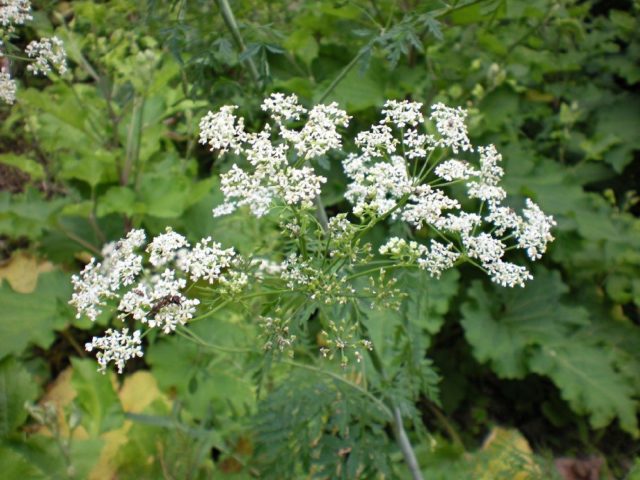
Chervil chemical composition
Common and forest chervil contain dozens of useful substances. Among the main ones you can list:
- B vitamins;
- ascorbic acid;
- potassium, manganese and selenium;
- iron and zinc;
- essential oil and phytoncides;
- vitamin A;
- riboflavin and thiamine;
- fatty acid;
- copper, sodium and phosphorus;
- glycosides;
- fiber;
- undecane and methylchavicol.
The energy value of the herb is about 230 kcal per 100 g of raw material. Since the common chervil is used in small quantities in cooking, the plant does not negatively affect the figure.
What is useful for common chervil and forest bush
The rich chemical composition determines the health benefits and harms of chervil. With proper use, kupyr:
- acts as a diuretic and helps to get rid of edema;
- strengthens the immune system;
- improves vascular health and increases their elasticity;
- promotes weight loss;
- accelerates the healing of wounds and burns;
- improves the functioning of the heart system;
- serves as a natural pain reliever;
- fights inflammation in the body;
- has a beneficial effect on the state of the nervous system;
- lowers blood pressure;
- helps with intestinal disorders;
- has an anticonvulsant effect;
- eases menopause in women;
- relieves unpleasant symptoms of gout;
- protects the organs of vision from diseases.
You can use the forest chervil to cleanse and restore the liver. A wild and garden plant is in demand for coughs and bronchitis, improves the condition in case of joint ailments.
How to use chervil and cooking methods
Traditional medicine offers several ways to process a medicinal plant. Forest and common chervil are used to create medicinal preparations for internal and external use.
Tea
Common and forest chervil can be brewed as tea. They do it like this:
- 25 g of plant raw materials are finely chopped;
- pour hot water in a volume of 250 ml;
- insist ten minutes and filter through a fine sieve.
It is useful to drink tea made from ordinary chervil in case of depression and nervous disorders. The plant-based remedy is beneficial for gastric ailments, and also serves as the prevention of sclerosis.

Infusion
An aqueous infusion of common chervil is beneficial for losing weight and with a tendency to edema. Make the tool like this:
- two large tablespoons of dry leaves of the plant are crushed;
- pour a glass of boiling water;
- incubated under the lid for an hour.
The filtered product is drunk only 50 ml three times a day before meals.
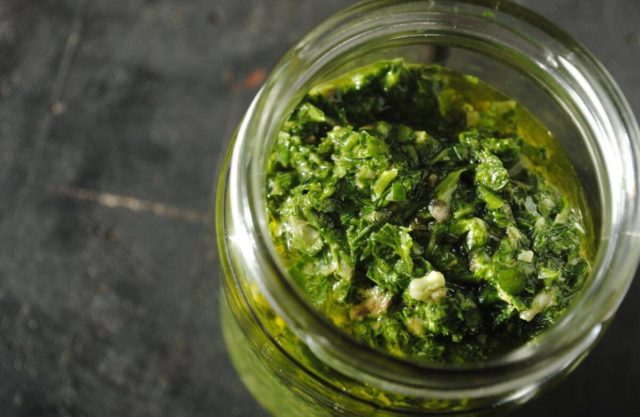
Decoction
Forest Kupyr has a good effect on gout, chronic liver ailments and gynecological inflammations in women. The recipe looks like this:
- two large spoons of crushed raw materials of the plant are poured with 500 ml of liquid;
- boil over low heat for a quarter of an hour;
- cool and filter.
Take the remedy for half a glass three times a day, if desired, you can add a little honey to the liquid. Forest chervil in the form of a decoction is also used externally for lotions for boils and abscesses.
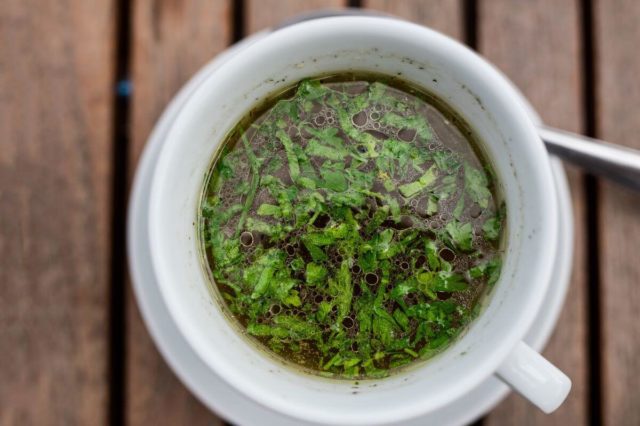
The juice
Fresh juice of common chervil is used internally and externally.It is easy to get the product, you need to thoroughly grind the leaves of the plant, and then push the gruel through cheesecloth to squeeze out the liquid. The juice is not taken in pure form, but diluted with water - 30 drops per glass three times a day.
The remedy helps with weakened immunity, promotes expectoration and cleanses blood vessels. It is possible to lubricate cuts and healing burns, skin inflammations and irritations with ordinary chervil juice.
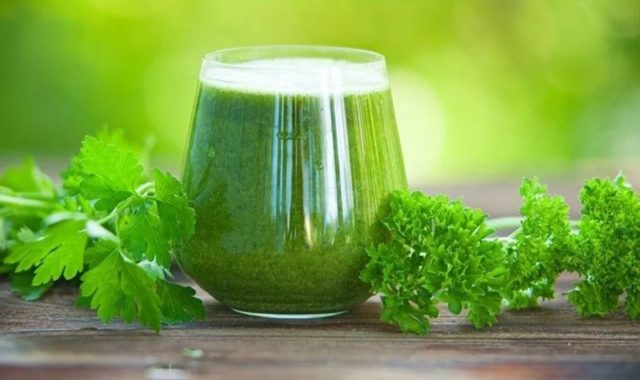
Lotions
Lotions with the use of forest gout are used for bruises and boils, as well as for arthritis and gout. Most often, fresh crushed leaves of the plant are taken, they are applied to sore spots and fixed with a bandage for an hour up to five times a day. Also, infusions and decoctions can be used for lotions, in which case a cotton pad or clean gauze is moistened in the drug.
The use of kupyr forest, common chervil in folk medicine
Forest and common chervil are beneficial for many acute and chronic diseases. Traditional medicine offers several proven recipes.
With weakened immunity
To strengthen the immune system, it is recommended to use the following herbal collection using ordinary chervil:
- kupyr in a volume of 1/2 small is mixed with an equal amount of red clover;
- add the same amount of dry verbena;
- the plants are poured with 250 ml of boiling water;
- insist for ten minutes.
You need to take the remedy twice a day - in the morning and in the evening. Forest and common garden chervil will not only increase resistance to colds, but also have a tonic effect.
Slimming
The following infusion helps to get rid of excess weight and remove toxins from the body:
- forest kupyr in the amount of a large spoon is poured with 250 ml of hot water;
- keep under the lid until it cools;
- passed through cheesecloth.
The resulting product should be drunk during the day, a single dosage is 80 ml. Take forest bush on an empty stomach shortly before meals.
For heart disease
The following decoction helps to strengthen blood vessels and improve heart function:
- fresh leaves of common chervil or forest bush are cut in a volume of 40 g;
- pour 450 ml of cold water;
- bring to a boil over high heat;
- reduce the gas to low and boil for another quarter of an hour.
The tool must be insisted for 1.5 hours and filtered. Drink a decoction of the plant, 80 ml three times a day on an empty stomach for a month. Then take a break for two weeks and, if necessary, repeat the course.
With nervous disorders
For insomnia and depression, wild bush in the form of infusion helps well. Prepare the medicine like this:
- four large spoons of a dry plant are poured into a thermos;
- pour 500 ml of boiling water;
- insist for an hour and filter.
The finished drink is divided into several portions and taken on an empty stomach during the day, approximately 120 ml. Kupyr also benefits from liver and kidney diseases.
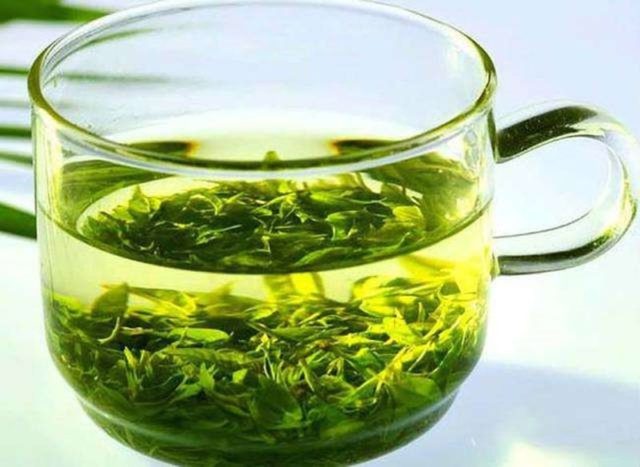
When coughing
Couper juice has a good effect on bronchitis and pneumonia. Traditional medicine recommends this recipe:
- several fresh leaves of the plant are crushed to a state of gruel;
- squeeze the juice and dilute 50 drops in half a glass of water.
You need to take the remedy up to four times a day on an empty stomach. The juice eliminates bacterial processes in the respiratory tract and promotes the unimpeded discharge of sputum.
With increased pressure
With hypertension, you can take a decoction of the roots of a medicinal plant. The tool is done like this:
- wood chervil is crushed in the volume of a large spoon;
- pour 200 ml of hot liquid;
- boil in a water bath for half an hour;
- insist under the lid for another hour.
Filter the finished product and add fresh boiling water to its original volume. Take forest chervil on an empty stomach only 15 ml up to three times a day. The decoction of the plant also helps with diarrhea due to its strong astringent properties.
With gynecological inflammation
With inflammatory processes of the reproductive sphere in women, you can use the following remedy:
- plant raw materials in the volume of two large spoons are poured with 500 ml of boiling water;
- keep in a water bath for 20 minutes;
- insist for another hour and filter.
The tool is taken during the day, 150 ml on an empty stomach.
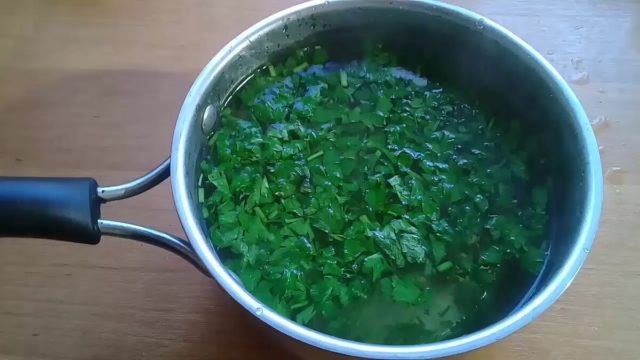
Application in cosmetology
The benefits and harms of chervil herb are valued both in medicine and in cosmetology. The extracts of the wild bush have anti-inflammatory, moisturizing and healing properties. Plant-based products are used to care for aging skin, with profuse rashes and acne. Plain chervil helps to get rid of the first wrinkles, makes age spots less visible and evens out the complexion.
In cosmetology, forest gum is used in the following ways:
- rub the skin with fresh juice to restore water balance and improve the tone of the epidermis;
- wash with infusions and decoctions of leaves to cleanse and relieve irritation;
- treat freckles with gruel from stems and leaves for clarification.
Decoctions and infusions of common chervil can be used to rinse hair. The products regulate the oiliness of the scalp and help get rid of dandruff.
The use of openwork chervil, forest gum in cooking
Ornamental and wild-growing herbs are used as a spice, either alone or in combination with parsley, tarragon and basil. The plant can be added to soups and vegetable side dishes, to meat dishes. Common chervil is found in ready-made spice mixtures.
You can put dried and fresh grass in potato salad, scrambled eggs and omelettes, sprinkle sandwiches, fried and aspic dishes with spice. Chervil seasoning improves the taste and aroma of canned vegetables, adds exquisite and original notes to grape and fruit vinegar.
Contraindications
The common chervil and bush are harmless edible plants with high medicinal value. Almost everyone can use them, among the contraindications are only:
- individual allergy;
- pregnancy;
- lactation period.
The common chervil flower is not poisonous, but when picking it yourself, it is important to carefully examine the plant raw materials. Do not confuse the forest bush with the spotted hemlock, the latter is a great danger and can cause severe poisoning.
Collection and procurement
It is advised to collect common and forest chervil in late spring or early summer before flowering. If the grass grows in the garden, then it is recommended to remove it a couple of months after sowing. At the same time, the plant is cut almost level with the ground in order to activate further development. The roots of the medicinal herb are dug up at the traditional time, in the fall, shortly before the cold weather, when the underground part accumulates a maximum of useful substances.
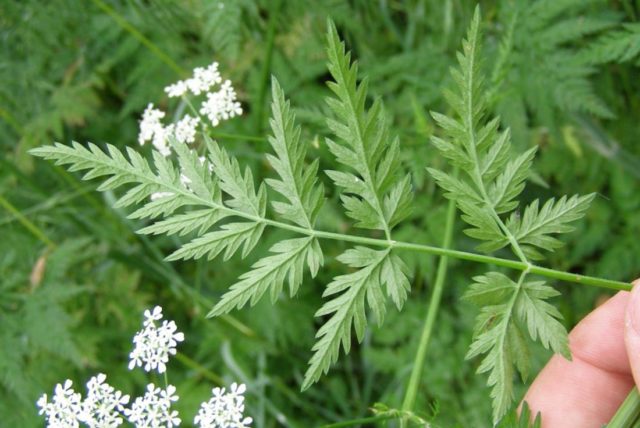
The harvested stems and young leaves are dried on a baking sheet or a sheet of thick paper in a shaded place with good ventilation. After the forest gum begins to crumble, it is removed in a paper bag or glass jar and stored at room temperature, protected from light.
If ordinary chervil is to be used for culinary purposes, then it is better to freeze the grass, so it will better preserve its taste and aroma. To begin with, fresh leaves and stems are scalded with boiling water, and then immediately cooled in ice water.Then the raw materials are dried, cut, laid out on a compact tray and sent to the freezer. After a few hours, the forest bush must be removed, transferred to a plastic container or plastic bag and put back into the cold.
Another option for freezing is to first lower the chopped fresh leaves in trays of water. This will produce ice cubes with the crushed plant. Dried or frozen kupyr retains its beneficial properties for two years.
Conclusion
The plant chervil and wild forest bush are widely used in medicine and cooking. The herb has numerous beneficial properties, a pleasant aroma and a spicy taste. The plant has very few contraindications, it is only important to correctly distinguish it from its poisonous twin.
Reviews about chervil

